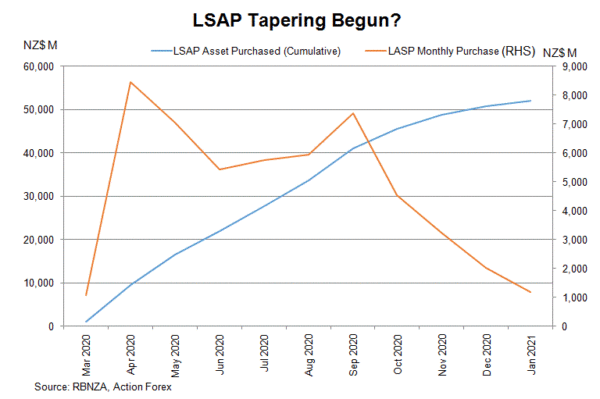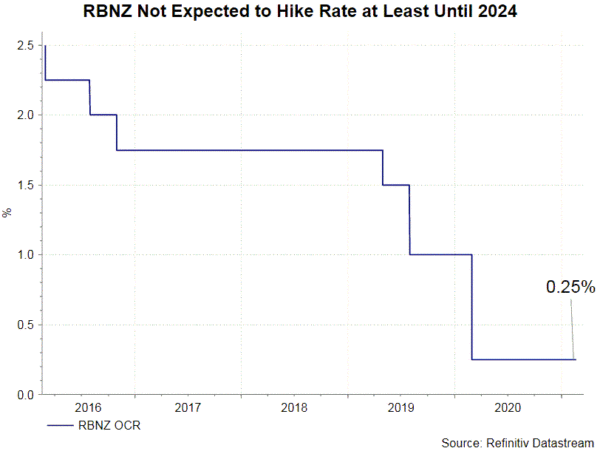Products You May Like
We expect the RBNZ to deliver a less dovish message in the upcoming meeting. Economic data released since the November meeting have been encouraging, with the price level and the job market on track to reach the target. These should lead to upgrades in the economic projections. Financial conditions have tightened as the yield curve has shifted upward and kiwi has appreciated significantly. In light of this, the central bank should maintain the OCR unchanged at 0.25%. Meanwhile, it will keep the ceiling of the Large Scale Asset Purchase program (LSAP) at NZ$100B and Funding for Lending Program (FLP) which began in December.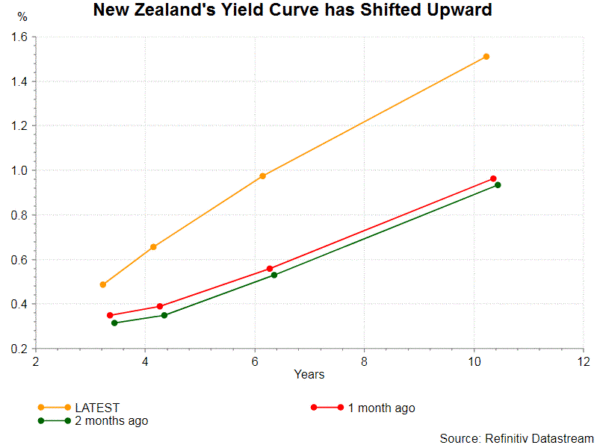
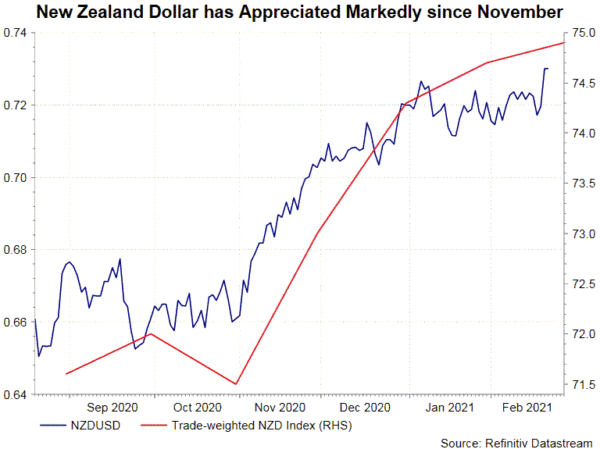
The economy has improved markedly since the November meeting. Headline CPI in 4Q20 steadied at 1.4% q/q, beating consensus of +1.1% and on track to reach the midpoint of RBNZ’s target range of 1-3%. Consumer prices excluding food, fuel and energy accelerated to +2.1% y/y, from +1.7% in3Q20. The unemployment rate dropped, after surging over the past 2 quarters, to 4.9% in 4Q20. The manufacturing sector started the new year with a strong note, BNZ’s manufacturing PMI jumped +9.2 points to 57.2 in January. As noted in the accompanying report, “all major sub-index values were up from December, with New Orders (62.4) leading the way with its highest result since July last year. Production (59.1) rose 6.8 points, while Employment (55.4) produced its highest result since August 2017”.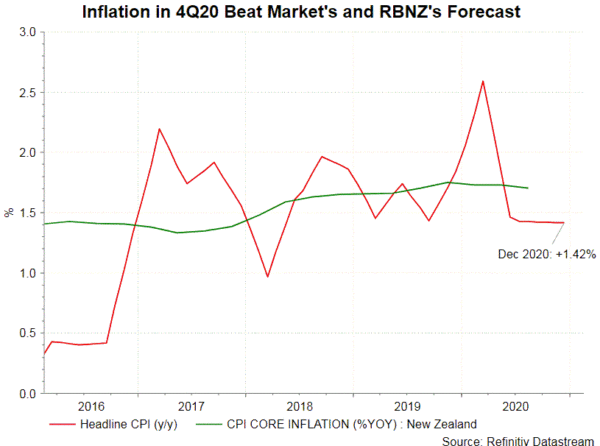
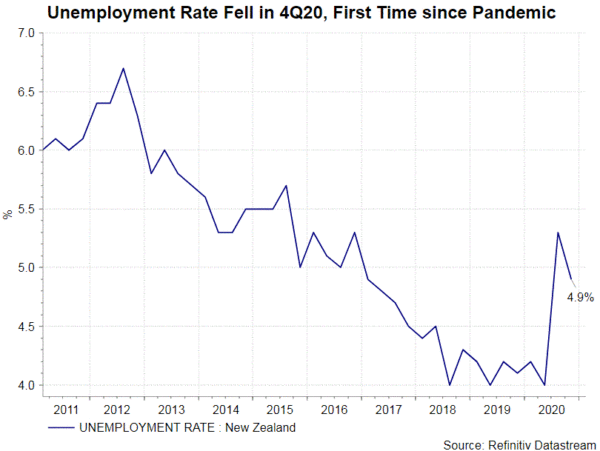
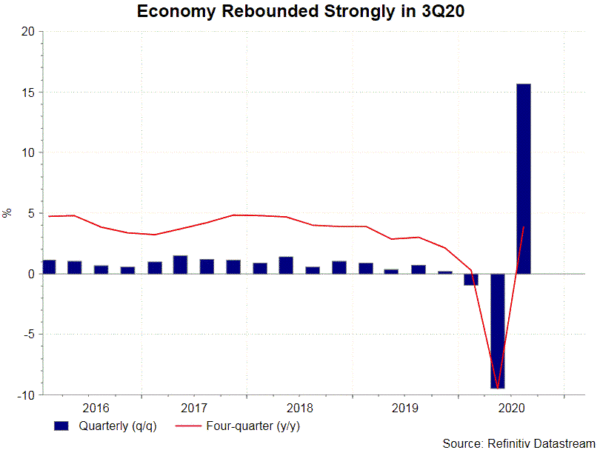
In November, policymakers suggested that “inflation and employment will remain below the remit targets for a prolonged period”. It also anticipated “an ongoing increase in unemployment as the economy adjusts” while inflation would “remain at the lower-end of the remit range for a period, and inflation expectations remain subdued”. These references should be adjusted as economic recovery turned out to be stronger than expected.
On the monetary policy, we expect the central bank to leave all existing measures unchanged. The RBNZ has trimmed its asset purchase in LSAP since October 2020. In January 2021, its purchase declined to NZ$ 1.19B, compared with NZ$ 7.37B in September. If the central bank continues to buy at similar pace as in January, it would have bought about NZ$ 70B of assets by the deadline in June 2021. This is only 70% of the NZ$100B ceiling. We expect the RBNZ to communicate with the market about the “tapering” over the past few months. It is possible that the central bank will hint about lowering the ceiling in coming months. The OCR will stay at record low for years while a negative rate appears unlikely now.